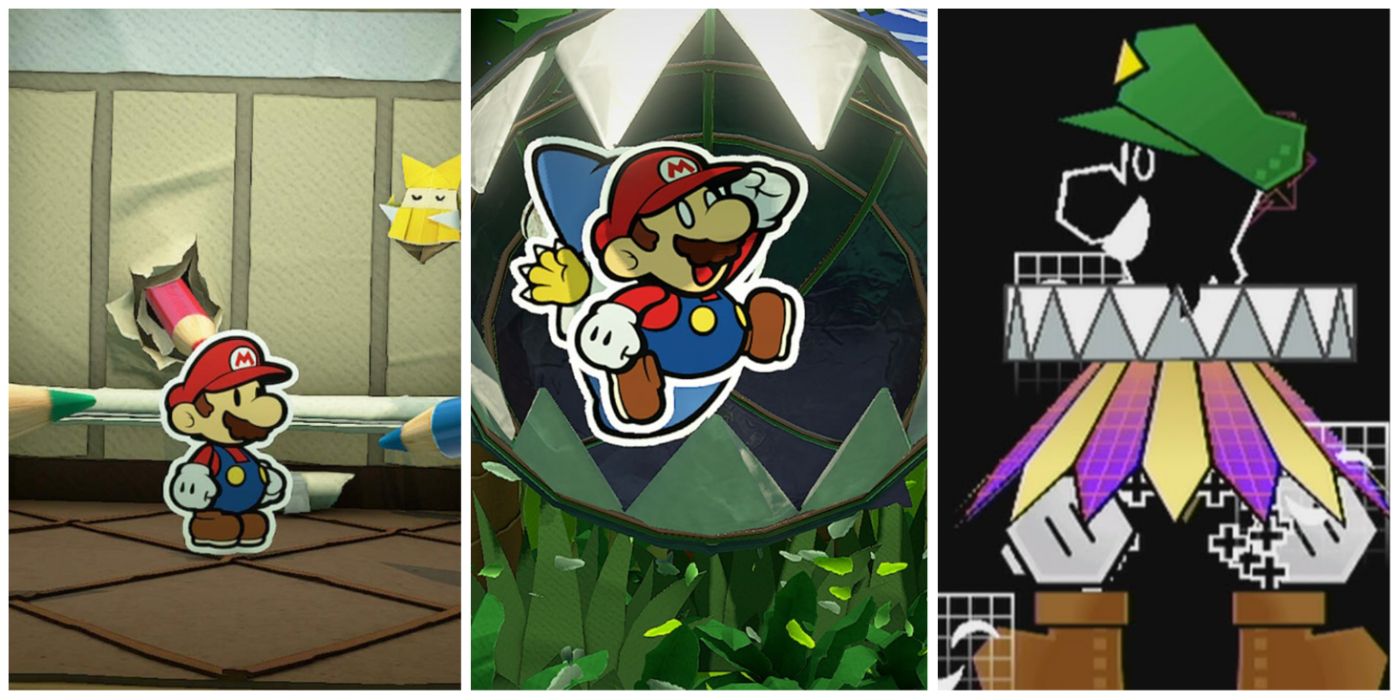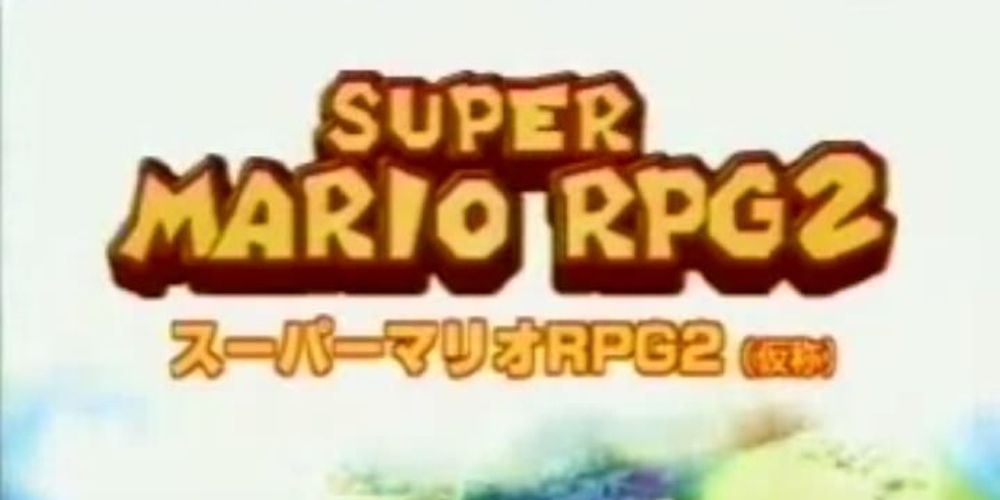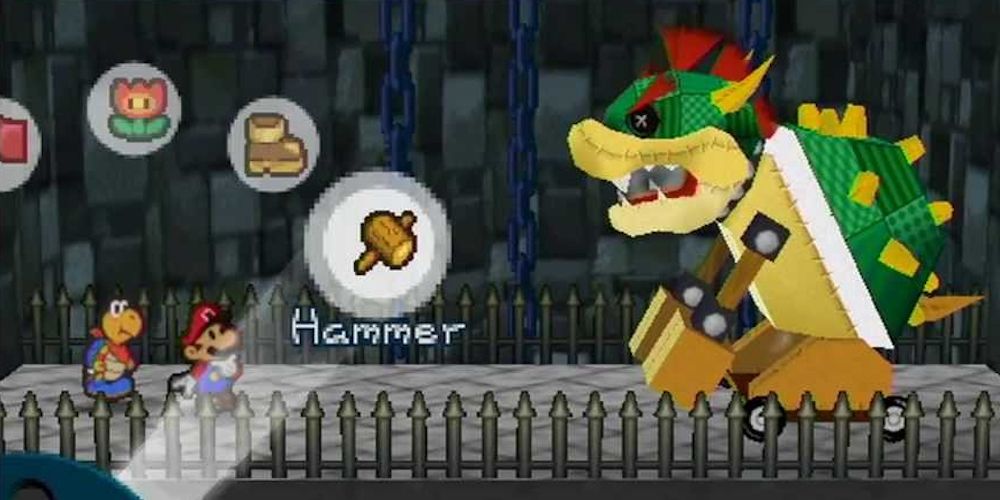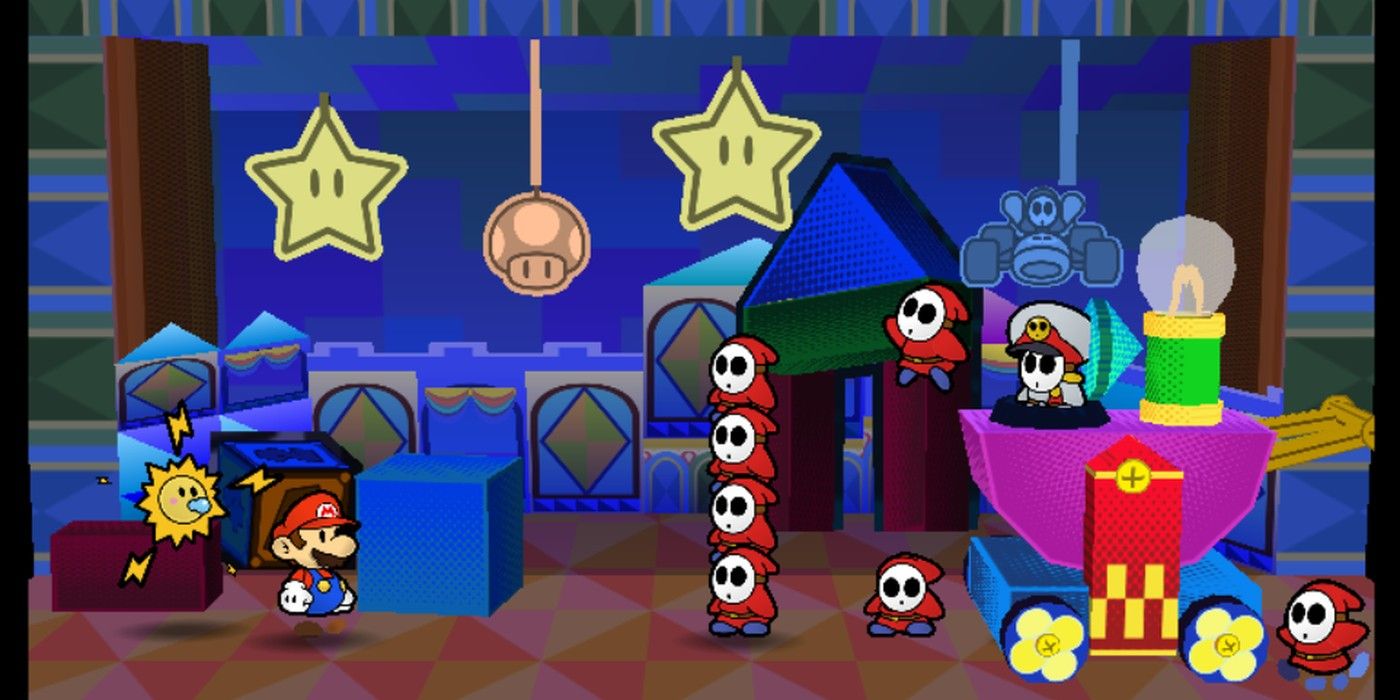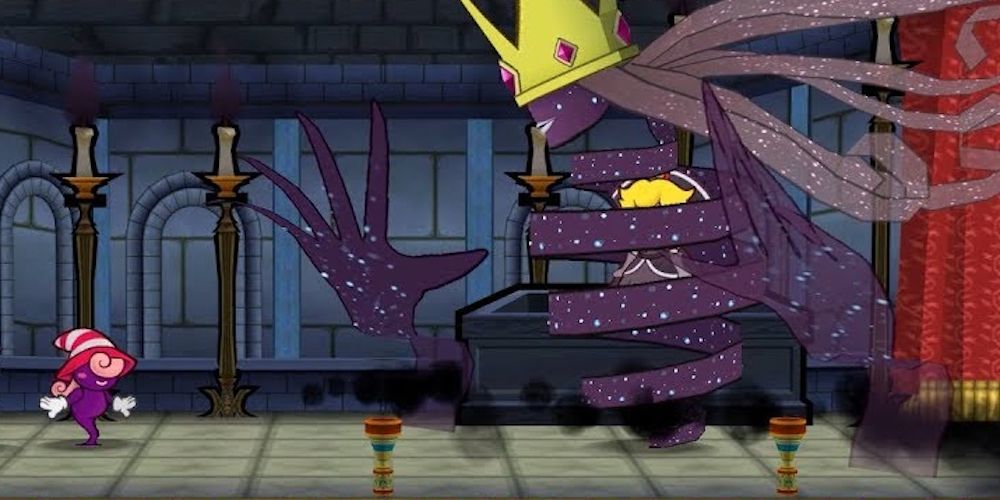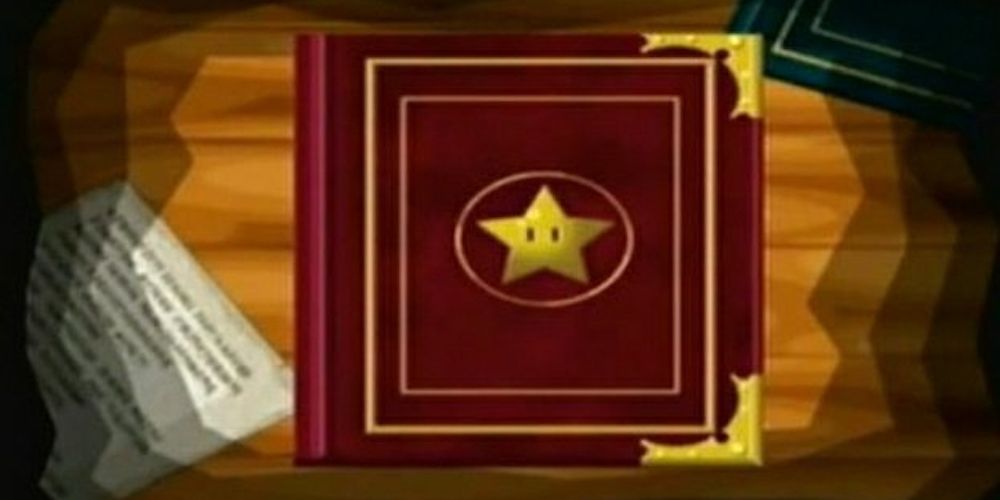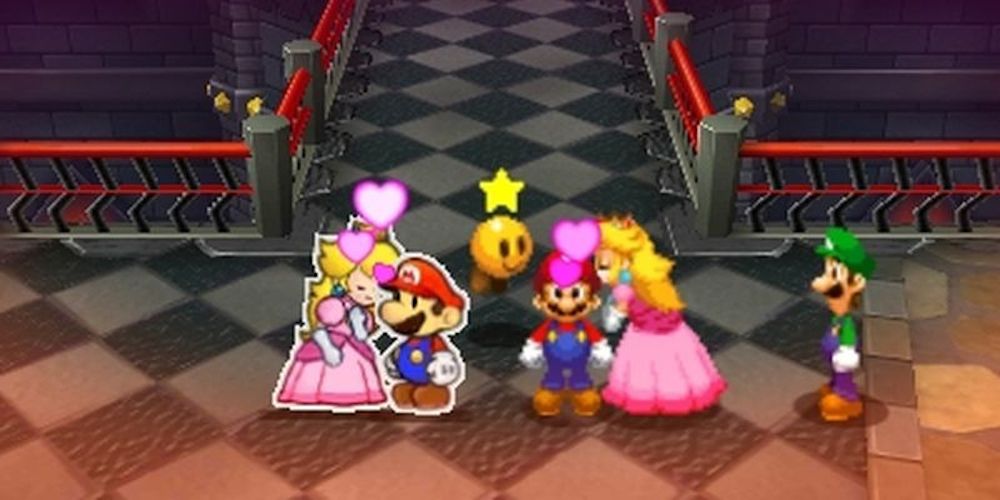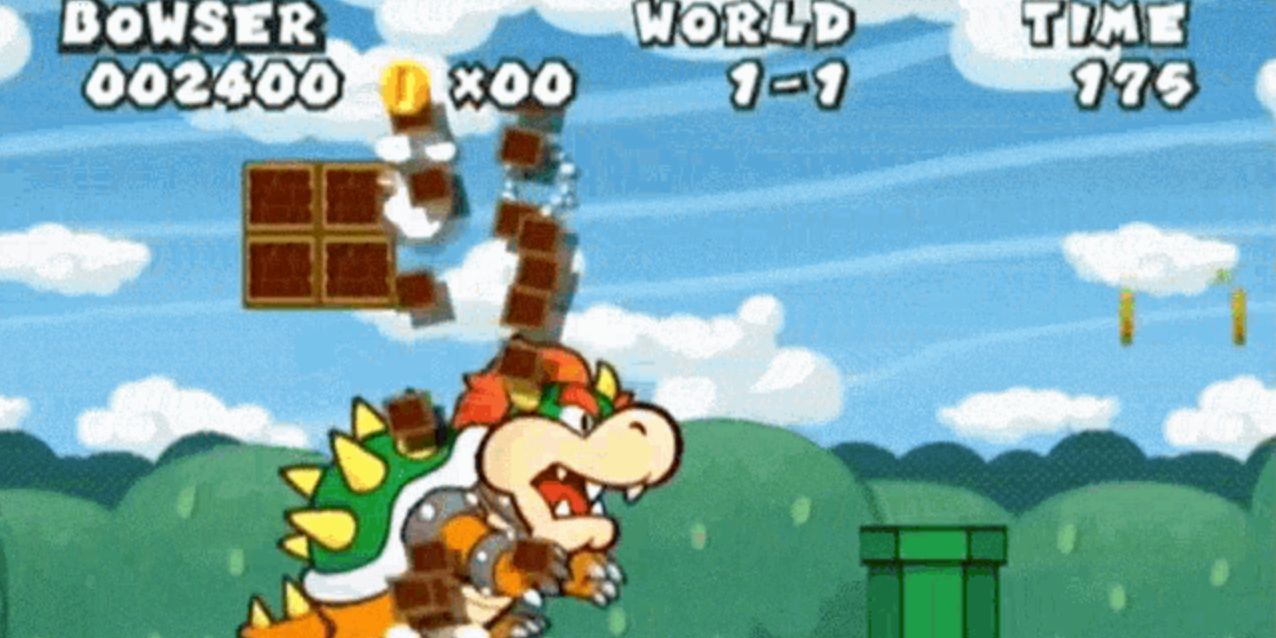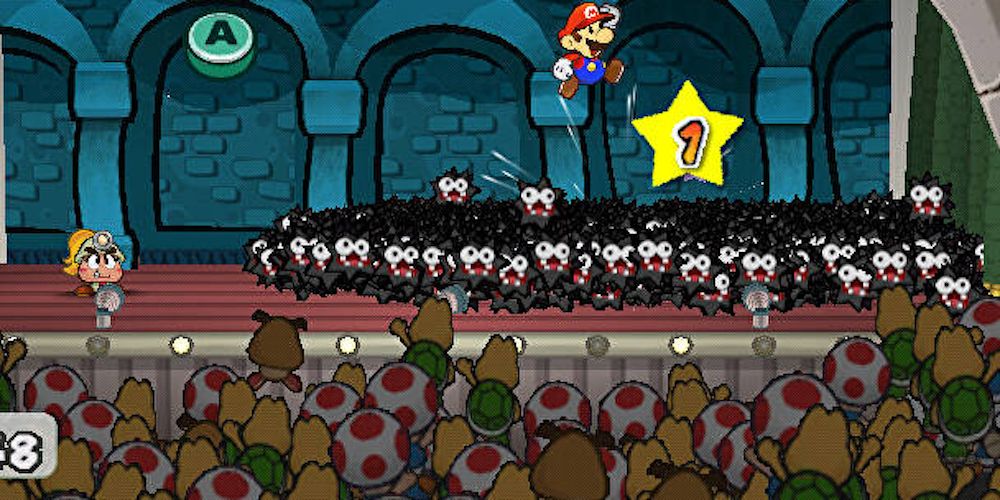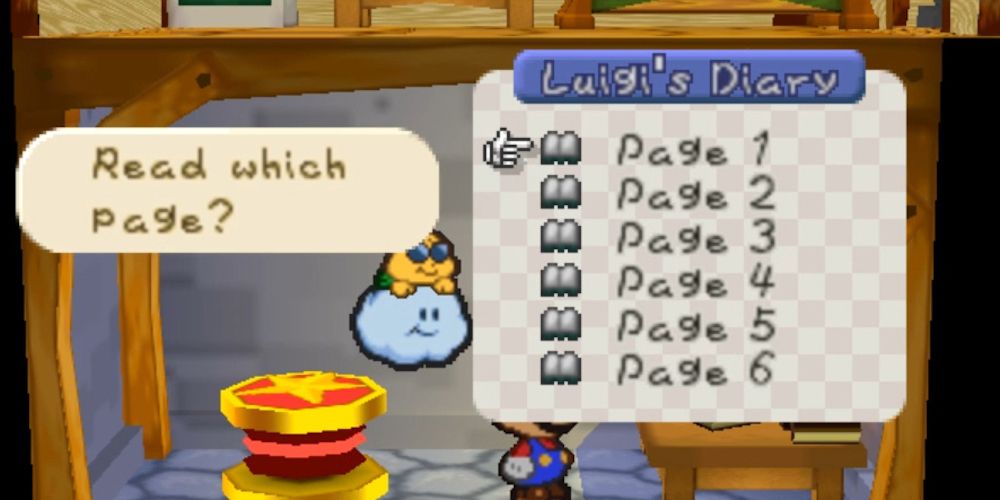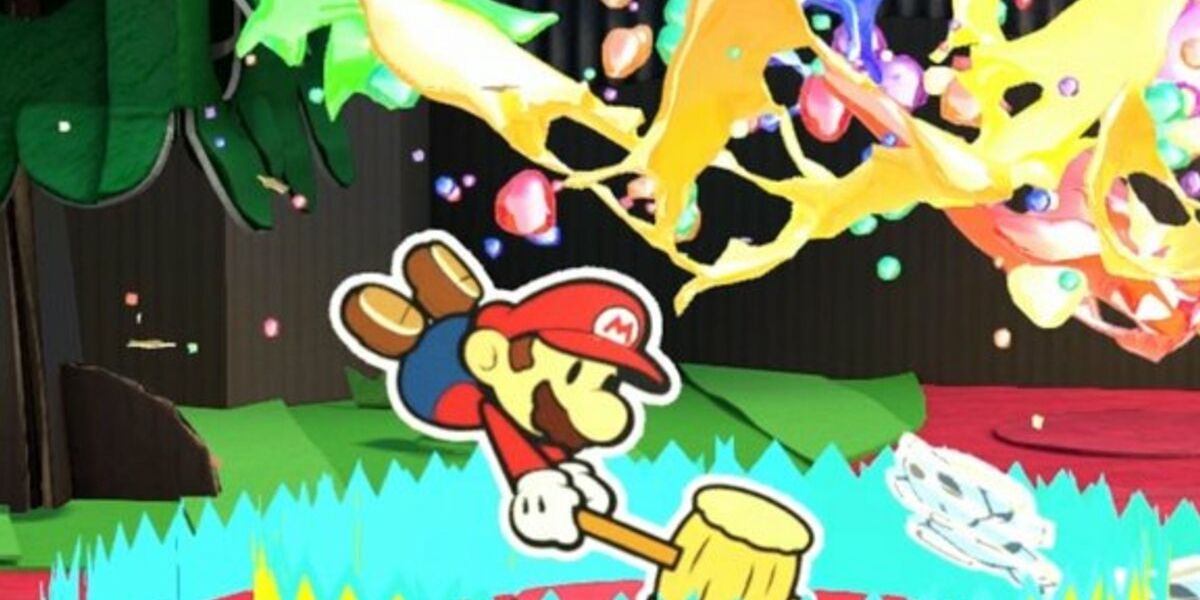Nintendo’s Super Mario is one of the most recognizable gaming mascots of all-time and the character’s games routinely receive high acclaim. The mainline Super Mario games are still top performers, but the platforming protagonist has slowly evolved, invading a multitude of different genres and unique forms.
The Paper Mario series has become an adorable fan-favorite ever since its debut in 2000, cleverly combining cute aesthetics, entertaining gameplay, and a formula that’s easy to expand. 2020’s Paper Mario: The Origami King was a satisfying return to form, but there’s still a lot to discover about this quirky franchise.
10 It Started As A Sequel To Super Mario RPG
The Paper Mario franchise emerged as its own distinct Nintendo series that’s unique from the mainline Super Mario games. However, the first Nintendo 64 entry in the franchise actually started as a sequel to the Super Nintendo cult classic, Super Mario RPG.
This sequel, which was still set to have the two-dimensional paper aesthetic, was first developed as a project for the Japan-only Nintendo 64DD peripheral. After multiple shifts in development, Super Mario RPG 2 would turn into the original Paper Mario (or Mario Story in Japan).
9 Its RPG Elements Have Been Toned Down
It should come as no surprise that the first Paper Mario was a fairly traditional RPG title since it was initially designed to succeed Super Mario RPG. Nintendo 64’s Paper Mario embraced a turn-based battle system that made use of badges as a way to use new skills and abilities.
This RPG mechanic got phased out over time, and the more recent focus on stickers over badges offered a much more simplistic battle experience. Certain entries in the franchise, like the Wii’s Super Paper Mario, fit more into the adventure game genre than RPG territory.
8 It’s Spanned 7 Games Across 6 Nintendo Consoles
Nintendo has one of the best reputations in the gaming industry when it comes to first-party franchises. Since the days of the original Nintendo Entertainment System, some continued to go strong, while others emerged after decades of dormancy.
Paper Mario impressively produced seven games in two decades, spanning six Nintendo consoles from the Nintendo 64 all the way to the modern Switch. The lengthiest absence for Paper Mario was the five-year window between the Wii’s Super Paper Mario and the Nintendo 3DS’ Sticker Star pivot.
7 The Series No Longer Alters Existing Mario Characters For Bosses
The Paper Mario games have introduced some inventive villains that go far beyond the limits of another altercation with Bowser. While earlier titles altered Mario characters — featuring possessed or mutated versions of Peach, Bowser, and Luigi — every Paper Mario game since Sticker Star hasn't been allowed to do so.
Now, new releases need to create wholly original enemies, which also explains why Origami King leans into the stationery boss battle approach. This reflects an unfortunate tightening of restrictions and protection of IP from Nintendo.
6 The First Three Games Are Presented As Novels
There are some really creative aesthetics to Super Mario titles that often go unrecognized, like the idea that Super Mario Bros. 3 is supposed to be viewed as a stage play. The first three Paper Mario entries follow this approach and present their adventures as cherished storybooks.
To go one step further, there are even characters within the Paper Mario games who appear to be in the process of writing the “Paper Mario” novel. In an interesting twist, Herringway’s novel seems to crossover and show up in Luigi’s Mansion.
5 It’s Crossed Over With The Mario & Luigi RPG Series
The Paper Mario series has gradually moved away from its RPG roots, leaving the handheld Mario & Luigi series to take over as the primary Super Mario RPG franchise. The Mario & Luigi titles have been standouts since their Game Boy Advance origins, but they often get overlooked since they’re largely handheld titles.
Nintendo indulges in a creative crossover between the Mario & Luigi and Paper Mario series with the Nintendo 3DS game, Mario & Luigi: Paper Jam. The game faithfully honors both series and offers double the Mario and Luigi mayhem.
4 The Games Allow Players To Control Luigi, Princess Peach, And Bowser
Part of the fun in most RPGs is that they contain eclectic parties where the player can control several unique individuals. Admittedly, the Paper Mario games largely focus on Mario as the leader, but the games have slowly gained more confidence when it comes to straying from this formula.
Throughout the series, gamers can play other beloved Super Mario characters like Princess Peach, Luigi, and even Bowser. It’s become less of a novelty to control supporting characters in a Mario game, but it still helps mix up the series’ formula.
3 The Thousand-Year Door Features A “Live Audience” Battle Component
Many recognize the GameCube’s Paper Mario: The Thousand-Year Door as a franchise highlight and one of the most ambitious titles on the GameCube. Thousand-Year Door strays far from the original Paper Mario’s roots and turns each chapter into a different genre of gameplay that ranges from a murder mystery to a wrestling tournament.
On top of this, Thousand-Year Door includes a "live audience" component to the battles wherein the gamer can play to the crowd and win them over to help earn extra items. However, players can suffer consequences when they poorly perform.
2 The Game Foreshadows Luigi's Mansion
The original Paper Mario was one of the last games to come out for the Nintendo 64, and it was developed at a point when Nintendo was already deep at work on their next console, the GameCube. Included as a bonus element in Paper Mario, the titular character could sneak some peeks at Luigi’s diary.
These entries singled out both Luigi’s fear of ghosts and his desire to headline his own game where his "name is in the title." This all pointed towards the GameCube’s launch title, Luigi’s Mansion, and it became a fun Easter Egg for Nintendo fans.
1 One Title Is Stuck As A Wii U Exclusive
Nintendo continues to push boundaries as a game designer, and ever since their Wii console, they’ve made a more concentrated effort to rejuvenate how video games are played. The Wii and Switch have been colossal hits, but the interim Wii U console remains a low point for the company.
Many Wii U games have been re-released on either the Switch or Nintendo 3DS. Now there are only a few dozen games that remained restricted to the Wii U. Paper Mario completionists will lament the fact that Paper Mario: Color Splash remains one of the few Wii U exclusive titles.

